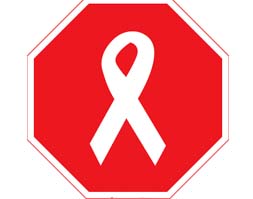Effectiveness of eliminating vertical transmission of HIV in a health center in Mozambique
Keywords:
ACQUIRED IMMUNODEFICIENCY SYNDROME, VERTICAL INFECTIOUS DISEASE TRANSMISSION/prevention & control, PREGNANT WOMEN.Abstract
Introduction: acquired immunodeficiency syndrome is a serious health problem, especially for developing countries.
Objective: to verify if the strategy of elimination of the vertical transmission diminished the risk of vertical transmission of AIDS according to the goals of the World Health Organization.
Method: a retrospective longitudinal study was performed at a health center in the city of Tete, Mozambique. Two groups were compared, women who followed and those who did not follow elimination of the vertical transmission. For the categorized variables, the X2 test and odds ratio were used.
Results: the mean age of pregnant women was 25.2 years. Pregnancy was more frequent in women with a general secondary education level. Of the total of pregnant women only 37.4% accepted and completely followed the elimination of the vertical transmission . With it, only 7.6% of newborns were VIH +.
Conclusions: the effectiveness of elimination of the vertical transmission was evidenced even though its results are far from achieving the goals proposed by the World Health Organization.
Downloads
References
1. Brooks, Geo F; Carroll, Karen C; Butel, Janet S; Morse, Stephen A e Mie (2012) Microbiologia Médica de Jawetz, Melnick e Adelberg. Editora McGraw-Hill. 25a Edição. Rio de Janeiro
2. Ngemu EK, Khayeka-Wandabwa C, Kweka JE, Choge JK, Anino E and Oyoo-Okoth E. Effectiveness of option B highly active antiretroviral therapy (HAART) prevention of mother-to-child transmission (PMTCT) in pregnant VIH women. BMC Research Notes 2014, 7:52. Disponible en: https://bmcresnotes.biomedcentral.com/articles/10.1186/1756-0500-7-52
3. VanDeusen A, Paintsil E, Agyarko-Poku T and Long EF. Cost effectiveness of option B plus for prevention of mother-to-child transmission of VIH in resource-limited countries: evidence from Kumasi, Ghana BMC Infectious Diseases 2015; 15:130. Disponible en: https://www.ncbi.nlm.nih.gov/pmc/articles/PMC4374181/
4. Cowan JF, Micek M, Cowan J FG, Napúa M, Hoek R, Gimbel S, et al. Early ART initiation among VIH-positive pregnant women in central Mozambique: a stepped wedge randomized controlled trial of an optimized Option B+ approach. Implementation Science 2015, 10:61. Disponible en: https://www.researchgate.net/profile/Sarah_Gimbel/publication/275668523_Early_ART_initiation_among_VIH-positive_pregnant_women_in_central_Mozambique_A_stepped_wedge_randomized_controlled_trial_of_an_optimized_Option_B_approach/links/55786b9f08ae75363755b2c8/Early-ART-initiation-among-VIH-positive-pregnant-women-in-central-Mozambique-A-stepped-wedge-randomized-controlled-trial-of-an-optimized-Option-B-approach.pdf
5. De Schacht C, Lucas C, Mboa C, Gill M, Macasse E et al. Access to VIH prevention and care for VIH-exposed and VIH-infected children: a qualitative study in rural and urban Mozambique. BMC Public Health 2014, 14:1240. Disponible en: https://www.researchgate.net/profile/Sarah_Gimbel/publication/275668523_Early_ART_initiation_among_VIH-positive_pregnant_women_in_central_Mozambique_A_stepped_wedge_randomized_controlled_trial_of_an_optimized_Option_B_approach/links/55786b9f08ae75363755b2c8/Early-ART-initiation-among-VIH-positive-pregnant-women-in-central-Mozambique-A-stepped-wedge-randomized-controlled-trial-of-an-optimized-Option-B-approach.pdf
6. Focà E, Odolini S, Sulis G, Calza S, Pietro V et al. Clinical and immunological outcomes according to adherence to first-line HAART in a urban and rural cohort of VIH-infected patients in Burkina Faso, West Africa. BMC Infectious Diseases 2014, 14:153. Disponbile en: https://www.ncbi.nlm.nih.gov/pmc/articles/PMC3994430/
7. Moodley P, Raveen P, Dhayendre M. Reduction in Perinatal VIH Infections in KwaZulu-Natal, South Africa, in the Era of More Effective Prevention of Mother to Child Transmission Interventions (2004–2012) Journal of Acquir Immune Defic Syndr 2013;63(3):410–415. Disponible en: http://journals.lww.com/jaids/Fulltext/2013/07010/Reduction_in_Perinatal_HIV_Infections_in.22.aspx
8. Callaghan-Koru JA, Nonyane BAS, Guenther T, Sitrin D, Ligowe R et al. Contribution of community-based newborn health promotion to reducing inequities in healthy newborn care practices and knowledge: evidence of improvement from a three-district pilot program in Malawi. BMC Public Health 2013, 13:1052. Disponible en: http://bmcpublichealth.biomedcentral.com/articles/10.1186/1471-2458-13-1052
9. Velasquez C. Características de los conocimientos y prácticas relacionadas a la prevención de la transmisión vertical del VIH/SIDA en gestantes. Centro de la Mujer Peruana Flora Tristán. Universidad Nacional Mayor de San Marcos CEPESJIU. Lima 2006.
10. Chertorivski S, Hernández Ávila M , Ortiz Domínguez M , Martínez Ampudia L , Izazola Licea JA. El VIH en México 2011. Centro nacional para la prevención y control del VIH/SIDA [Internet] 2011. Disponible en: http://www.cenSIDA.salud.gob.mx/descargas/2011/vihSIDAenmexico2011.pdf.
11. Cecchini D, Martinez M, Astarita V, Nieto C, Giesolauro R, Rodriguez C. Prevención de la transmisión vertical del VIH-1 en un hospital público de complejidad terciaria de Buenos Aires, Argentina. Rev Panam Salud Publica. 2011;30(3):189–95.
Disponible en: http://iris.paho.org/xmlui/bitstream/handle/123456789/9464/v30n3a01.pdf?sequence=1&isAllowed=y
12. Bisio F, Masini G, Blasi Vacca E. Effectiveness of a project to prevent VIH vertical transmission in the Republic of Congo. Journal of Antimicrobiology Chemother. 2013 Aug; 68(8): 1862-71. Disponible en: https://academic.oup.com/jac/article-lookup/doi/10.1093/jac/dkt102.
13. Van Lettow M, Bedell R, Landes M, Gawa L, Gatto S et al. Uptake and outcomes of a prevention-of mother-to-child transmission (PMTCT) program in Zomba district, Malawi. 2011, 11:426. Disponible en: http://bmcpublichealth.biomedcentral.com/articles/10.1186/1471-2458-11-426.
14. Thistle P1, Bolotin S, Lam E, Schwarz D, Pilon R et al. Highly active anti-retroviral therapy in the prevention of mother-to-child transmission of VIH in rural Zimbabwe during the socio-economic crisis. Med Confl Surviv. 2011 Jul-Sep; 27(3):165-76. Disponible en: https://www.ncbi.nlm.nih.gov/pubmed/22320015.
15. Veen CA1, van Kasteren ME, Fiedeldeij CA, Kuipers MH, van Dijken PJ et al. Outcomes of prevention of vertical VIH transmission; 15 years of experience in a non-university Neonatal VIH center. Ned Tijdschr Geneeskd. 2014;158(6). Disponible en: https://www.ncbi.nlm.nih.gov/pubmed/24495366

Published
How to Cite
Issue
Section
License
Authors who have publications with this journal agree to the following terms: Authors will retain their copyrights and grant the journal the right of first publication of their work, which will be publication of their work, which will be simultaneously subject to the Creative Commons Attribution License (CC-BY-NC 4.0) that allows third parties to share the work as long as its author and first publication in this journal are indicated.
Authors may adopt other non-exclusive license agreements for distribution of the published version of the work (e.g.: deposit it in an institutional telematic archive or publish it in a volume). Likewise, and according to the recommendations of the Medical Sciences Editorial (ECIMED), authors must declare in each article their contribution according to the CRediT taxonomy (contributor roles). This taxonomy includes 14 roles, which can be used to represent the tasks typically performed by contributors in scientific academic production. It should be consulted in monograph) whenever initial publication in this journal is indicated. Authors are allowed and encouraged to disseminate their work through the Internet (e.g., in institutional telematic archives or on their web page) before and during the submission process, which may produce interesting exchanges and increase citations of the published work. (See The effect of open access). https://casrai.org/credit/


